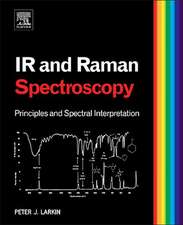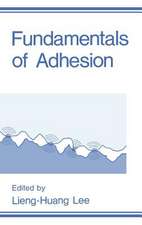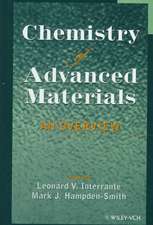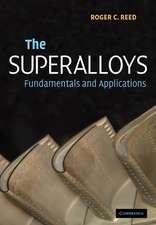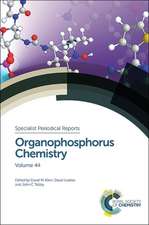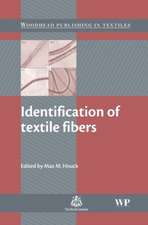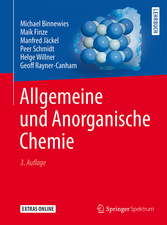Tanning Chemistry: The Science of Leather
Autor Anthony D. Covingtonen Limba Engleză Paperback – 31 iul 2011
Even in the 21st Century, the manufacture of leather retains an air of the dark arts, still somewhat shrouded in the mysteries of a millennia old, craft based industry. Despite the best efforts of a few scientists over the last century or so, much of the understanding of the principles of tanning is still based on received wisdom and experience. Leather is made from (usually) the hides and skins of animals - large animals such as cattle have hides, small animals such as sheep have skins. The skin of any animal is largely composed of the protein collagen, so it is the chemistry of this fibrous protein and the properties it confers to the skin with which the tanner is most concerned. In addition, other components of the skin impact on processing, impact on the chemistry of the material and impact on the properties of the product, leather. Therefore, it is useful to understand the relationships between skin structure at the molecular and macro levels, the changes imposed by modifying the chemistry of the material and the eventual properties of the leather. This book aims to contribute to changing the thinking in the industry, to continue building a body of scientific understanding, aimed at enhancing the sustainability of an industry which produces a unique group of materials, derived from a natural source. The Science of Leather is the only current text on tanning science, and addresses the scientific principles which underpin the processes involved in making leather. It is concerned with the chemical modification of collagen, prior to tanning and the tanning reactions in particular. The subject is covered in the following order: collagen chemistry, collagen structure, skin structure, processing to prepare for tanning, the tanning processes and processing after tanning. The aim of the book is to provide leather scientists and technologists with an understanding of how the reactions work, the nature of their outcomes and how the processes can be controlled and changed. The objective is to synthesise a scientific view of leather making and to arrive at an understanding of the nature of tanning - how the wide range of chemistries employed in the art can change the properties of collagen, making leather with different properties, especially conferring different degrees of stabilisation as measured by the hydrothermal stability. Environmental issues are not treated as a separate theme - the impact of leather making on the environment is a thread running through the text, with the assumption that better understanding of the science of leather making will lead to improved processing. The book also reflects on the ways leather technology may develop in the future based on the foundation of understanding the scientific principles which can be exploited. It also includes a subject index, references and a glossary. The book provides the reader with insights into the role science plays in leather technology and provides fundamental understanding, which should be the basis for scientific and technological research and development for the benefit of the global leather industry. The book is aimed at students, leather scientists and technologists, in both academia and industry, in leather production and in chemical supply houses.
Preț: 359.99 lei
Nou
Puncte Express: 540
Preț estimativ în valută:
68.91€ • 74.87$ • 57.92£
68.91€ • 74.87$ • 57.92£
Carte disponibilă
Livrare economică 31 martie-14 aprilie
Livrare express 14-20 martie pentru 44.87 lei
Preluare comenzi: 021 569.72.76
Specificații
ISBN-13: 9781849734349
ISBN-10: 1849734348
Pagini: 483
Dimensiuni: 154 x 232 x 29 mm
Greutate: 0.77 kg
Editura: Royal Society Of Chemistry
ISBN-10: 1849734348
Pagini: 483
Dimensiuni: 154 x 232 x 29 mm
Greutate: 0.77 kg
Editura: Royal Society Of Chemistry
Cuprins
Chapter 1: Collagen and skin structure; Chapter 2: Skin and its Components; Chapter 3: Curing and preservation; Chapter 4: Soaking; Chapter 5: Unhairing; Chapter 6: Liming; Chapter 7: Deliming; Chapter 8: Bating; Chapter 9: Pickling; Chapter 10: Tanning; Chapter 11: Chrome tanning; Chapter 12: Mineral tanning; Chapter 13: Vegetable tanning; Chapter 14: Other tannages; Chapter 15: Post tanning; Chapter 16: Dyeing; Chapter 17: Fatliquoring; Chapter 18: Drying; Chapter 19 : Theory of tanning; Chapter 20: Future technologies
Notă biografică
Anthony D Covington is Emeritus Professor of Leather Science at the University of Northampton, UK. The book is the culmination of a 40 year career in chemistry and the leather industry which started with a graduateship of the Royal Institute of Chemistry (now the Royal Society of Chemistry) at Teesside Polytechnic (now the University of Teesside). He continued his chemistry experience with doctoral studies in physical organic chemistry at Stirling University, followed by post doctoral research in physical chemistry at the University of Newcastle upon Tyne. Professor Covington then joined the British Leather Manufacturers' Association (later to become BLC The Leather Technology Centre of Northampton, UK), where he spent 18 years engaged in research and development, industrial consultancy and problem solving in the UK and overseas. From 1995-7, he was President of the International Union of Leather Technologists and Chemists Societies (IULTCS) and since 1995 he has been with the British School of Leather Technology of the University of Northampton. Professor Covington has 21 doctoral completions and 230 technical publications to his name.
Textul de pe ultima copertă
Tanning Chemistry is the only current text on tanning science, and addresses the scientific principles which underpin the processes involved in making leather. It is concerned with the chemical modification of collagen, prior to tanning and the tanning reactions in particular. The subject is covered in the following order: collagen chemistry, collagen structure, skin structure, processing to prepare for tanning, the tanning processes and processing after tanning. The aim of the book is to provide leather scientists and technologists with an understanding of how the reactions work, the nature of their outcomes and how the processes can be controlled and changed. The objective is to synthesise a scientific view of leather making and to arrive at an understanding of the nature of tanning - how the wide range of chemistries employed in the art can change the properties of collagen, making leather with different properties, especially conferring different degrees of stabilisation as measured by the hydrothermal stability. Environmental issues are not treated as a separate theme - the impact of leather making on the environment is a thread running through the text, with the assumption that better understanding of the science of leather making will lead to improved processing. The book also reflects on the ways leather technology may develop in the future based on the foundation of understanding the scientific principles which can be exploited. It also includes a subject index, references and a glossary. The book provides the reader with insights into the role science plays in leather technology and provides fundamental understanding, which should be the basis for scientific and technological research and development for the benefit of the global leather industry. The book is aimed at students, leather scientists and technologists, in both academia and industry, in leather production and in chemical supply houses.
Descriere
Written by the leading expert in the field, this is the only current text on tanning science.

